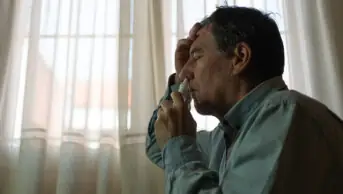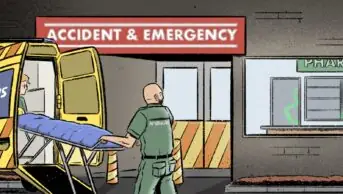Patients admitted to the emergency department (ED) are increasingly complex, often with multiple comorbidities and complex polypharmacy. Currently in our NHS trust, there is no dedicated pharmacy service in the ED, requiring medical and nursing teams to undertake medicines-related functions, which remove them from their other care duties.
A one-week pilot in December 2024, which placed a pharmacist in the ED for two hours per day, has demonstrated the positive impact of this intervention, with the pharmacist identifying and resolving numerous medication issues.
Intervention
Building on the success of the initial pilot, a more comprehensive service was implemented in January 2025. This involved a pharmacist prescriber working from 08:00 to 16:00 and a pharmacy technician working from 08:00 to 12:00, Monday to Friday, for one week.
The primary goal of the team was to review, prescribe, and supply time-critical medications to prevent missed doses. This included drugs for conditions such as Parkinson’s disease, epilepsy and diabetes, as well as antibiotics and analgesics.
The pharmacist prescriber conducted in-depth clinical medication reviews, which involved assessing medication use within the context of a patient’s overall condition. The pharmacy technician primarily focused on medicines reconciliation and addressing medication supply issues.
Results
The team reviewed 204 prescription charts, undertaking 82 full medication reconciliations. A total of 168 clinical interventions were carried out by the pharmacist. A total of 101 time-critical medication supplies were made helping to prevent missed doses. The pharmacy team identified 129 prescribing discrepancies, with the pharmacist prescriber resolving 95% (122) of these issues without needing additional physician input. This freed up doctor time to focus on patient care.
Examples of interventions included:
- Providing support to a nurse on how to use an apomorphine pump for a Parkinson’s disease patient;
- Adjusting/suspending medications for patients with acute kidney injury;
- Sourcing alternative formulations of medicines for a patient who could not swallow tablets, enabling a direct discharge from the ED and preventing a hospital admission.
Outcome
The pilot successfully demonstrated that a dedicated pharmacy service in the ED significantly improves patient safety and clinical care. The team’s presence prevented the omission of critical medications and proactively identified and resolved prescribing errors. By taking on the responsibility for medication supplies, the pharmacy team helped free up nursing staff to focus on direct patient care, thereby enhancing efficiency and workflow in a high-turnover department.
The ability of the pharmacist prescriber to independently resolve 95% of prescribing issues allowed medical staff to concentrate on their core duties, such as triaging and reviewing new patients. The team made interventions that directly improved patient flow and prevented unnecessary admissions, such as adjusting medications to enable faster discharge.
Staff feedback from consultants, registrars, and nurses was overwhelmingly positive. They highlighted the value of having a pharmacist on-site to provide expert advice, quickly resolve medication issues, and ease the workload of the medical and nursing teams. One acute medicine consultant noted that the pharmacy team “eased their workload hugely”.
Conclusion
This pilot has highlighted a gap in the current service provision at our hospital’s ED. The presence of a pharmacy team, even for a limited period, has been shown to be a benefit in terms of patient safety and medicines optimisation, with the potential for admission avoidance as a result.
The pilot aligns with national standards set by the Royal College of Emergency Medicine, which highlight the need for pharmacy services in the ED. The pilot’s success demonstrates the potential to improve patient outcomes, reduce length of stay, and free up valuable clinical time for nurses and doctors. A permanent, embedded pharmacy team in the ED can help promote a more streamlined and effective patient journey. The results and feedback following the pilot strongly support the need for a sustained, integrated pharmacy service in the ED.
Shane Kailla, principal pharmacist and advanced clinical practitioner — acute and emergency medicine


